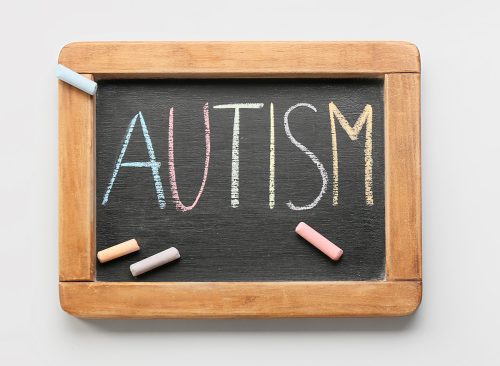
In May, a headline in the New Republic declared, "Medical mysteries are the new true crime." It makes sense. Readers, pulp-fiction devotees, and movie fans have always been susceptible to getting caught up in questions of whodunnit. Confronted with a global pandemic that still has so many open questions, many of us turned our amateur detective skills and interests to why and how the human body does what it does. In the process, it's glaringly obvious that as much as medicine has advanced, so many age-old questions still remain—and the body will never lose its capacity to fascinate. These are 11 medical mysteries that baffle doctors—as strange as they may seem, all of them are more common than you'd ever guess.

Retired doctor Thomas Trezona was fearful, then baffled, about the symptoms he began experiencing: Upper abdominal pain and unexplained weight loss. He knew these were the signs of pancreatic cancer, the deadliest malignancy because his mother had died of the disease. But CT scans and blood tests revealed no tumor. Parasites were ruled out, as was gastroenteritis and gallbladder disease. It was only when an MRI was ordered that the true cause was found: Trezona had a small metal fragment in his upper abdomen. He had unwittingly swallowed a grill-brush wire that was attached to a steak he had grilled. The wire migrated through the wall of his stomach, causing severe pain and weight loss, which in turn caused gallstones. This is not a freak accident: About 1,700 Americans are treated in the ER for similar injuries each year. The Consumer Product Safety Commission recommends using nylon brushes or balled-up aluminum foil to clean grills.

It's not breaking news that rates of overweight and obesity have skyrocketed among Americans since the 1980s. Nineteen states have obesity rates over 35 percent, which increased from 16 states in 2022. (Ten years ago, no states had obesity rates above 35 percent.) Experts predict half of Americans will be obese by 2029. Many sensible explanations have been offered. Most of us sit all day long instead of working in factories like previous generations; we overconsume sugar (particularly via sugar-sweetened drinks) and simple carbs (largely in ultra-processed foods and fast food); our calories and portions are too large—the list goes on. But sedentary lifestyles and poor diets existed in previous generations. Is that enough to explain the rapid increase in obesity in such a short time? Some experts aren't convinced—if diet and exercise are the simple answer, why do so many people struggle to keep the weight off?—and say a combination of lifestyle, genetic and environmental factors are at play.

Colon cancer used to be almost exclusively a disease of the elderly—in the '80s, the vast majority of cases were reported in people over age 70. But in recent years, colon cancer rates have been declining in senior citizens (thanks to increased screening) and, worryingly, rising in young people, many of whom have advanced disease by the time they're diagnosed. The increase has been so steady that the official recommendation to start colon cancer screening was lowered from age 50 to age 45. The baffling question is why. A variety of explanations have been proposed—the rise in obesity, an increase in consumption of ultra-processed foods, binge drinking among young people (all of which cause inflammation), or some environmental trigger. But scientists have no solid answers.

Recent headlines about the struggles of actresses Christina Applegate and Selma Blair with multiple sclerosis (MS) have shined a spotlight on the condition—and the fact that so much about it still baffles doctors 155 years after it was discovered. MS is a potentially disabling autoimmune disease that affects the central nervous system, leading to various neurological symptoms such as weakness, paralysis, and tremor. Although treatments have come a long way—allowing many people with MS to live full lives—the exact cause or causes of the disorder are still unknown. Both genetic and environmental factors are suspected.

In March, the Washington Post's "Medical Mysteries" column reported on a 47-year-old woman who began experiencing symptoms of hearing loss at what she considered too young an age. Her doctor told her that she probably had compromised her hearing from listening to loud music and said the only treatment was hearing aids. Not only was she convinced that wasn't the case—she rarely listened to music at high volume—she couldn't afford the $3,000 hearing aids prescribed. Tests with other ENTs and an allergist suggested allergies or bacterial infection, but treatments didn't solve the problem. An appointment with another ENT revealed the cause: otosclerosis, abnormal bone growth in the middle ear that's the most common cause of middle ear hearing loss in young and middle-aged adults. Surgery restored 90% of her hearing.

Although Lyme disease—a syndrome spread by ticks—has been in the news for decades, people affected by it still have trouble being properly diagnosed and treated. Its symptoms are vague and often mistaken for other conditions such as chronic fatigue syndrome, fibromyalgia, and arthritis, and treatments aren't one-size-fits-all, writes Mary Jane Heppe, a Lyme disease sufferer in Oregon. Her advice: Get tested by a Lyme specialist if you suspect you're infected; not all labs have the expertise to pinpoint this still relatively obscure diagnosis.

An 80-year-old man profiled in the New York Times' "Diagnosis" column had always loved the sun. But all of a sudden, he was sensitive to it—exposure to rays made his arms bright pink and his neck itchy. He had developed an instant reaction to the sun called photodermatitis — an inflammatory skin reaction triggered by sunlight. Most cases are caused by the use of medications. The man's doctor reviewed his medication list, biopsied the rash on his skin, and realized it was hives, probably caused by antihypertensive medication. When stopping the medication didn't help, the doctor investigated further and realized the man had developed solar urticaria—a sudden allergy to sunshine. The cause or causes are poorly understood; the allergy can start at any age and last a lifetime. The man coped with antihistamines, liberal application of sunscreen, and wearing long pants and long-sleeved shirts.

This chronic condition can cause widespread pain throughout the body, fatigue, and sleep disturbances. It can also have mental and emotional effects. Its underlying cause is still not fully understood. A recent study published in RMD Open found that people with fibromyalgia RMD have a higher rate of suicide, accidents, and infection than people without the condition.

Long COVID—an umbrella term for a wide range of symptoms that follow COVID infection and may last for years—has been one the most urgent medical mysteries of the decade. It's difficult to define, and causes and treatments have been almost totally elusive. Three years after the pandemic began, "we're struggling," infectious disease expert Amesh Adalja, MD, wrote on WebMD in March. "There is no diagnostic test or criteria that confirms this diagnosis… Indeed, when one does routine blood work or imaging on these patients, it is unlikely that any abnormality is found." The biggest problem? Experts still lack "an understanding of the biological basis of this condition," Adalja says, making it "impossible to diagnose patients, develop treatment regimens, or to prognosticate (though symptoms seem to dissipate over time)."

Even the most casual consumer of medical news is familiar with headlines that autism spectrum disorder (ASD) is more commonly diagnosed and discussed than it used to be. In March, the CDC said that more children are being diagnosed with ASD—a complex developmental disorder characterized by difficulties in social interaction and communication—than ever before: today, 1 in 36 children, compared to 1 in 110 in 2006. Although the cause or causes of ASD are still not known, experts say one reason for the increase is a surge in awareness and advocacy of autism. "The main reason we are finding more autism is simple: Clinicians are getting better at spotting what was always there," two autism advocates wrote in STAT News that month. "There is no 'epidemic of autism.' Instead, what we face is an epidemic of need." Some experts say environmental factors—such as exposure to pollution, low birth weight, and stress—may also play a causative role.














